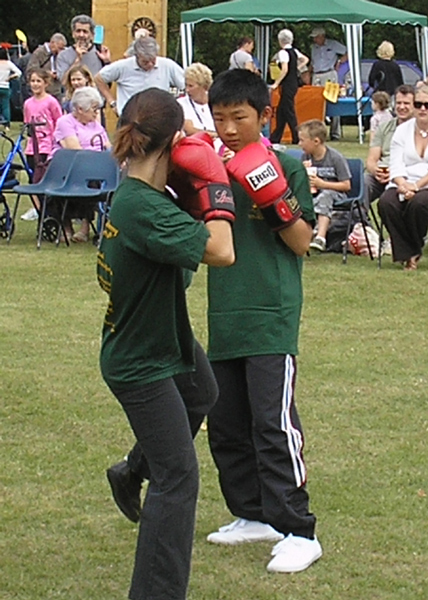Self Defence
The best form of self-defence is to not be in a situation where you may be vulnerable or at risk in some manner. Whilst an obvious statement, it is not really that practical in the real world. Without living in a closet, it is not always possible to eliminate risk entirely. That doesn't mean, however, that we should adopt the attitude of "I can go anywhere I like, at any time of the day or night", as that would be entirely reckless. We need to strike a balance in our lives where we weigh-up the odds, and plan ahead at times. It's a bit like when trying to cross a busy main road. Do we look for somewhere safe to cross, or do we cover our eyes, step out, and hope for the best?
In the event that we have been unable to avoid a potentially risky situation, and we find ourselves in immediate danger, we may need to employ a physical response, in order to escape from that situation. That could be as simple as running away - always assuming that you have somewhere to run to, and that the threat is unable to follow or catch up with you of course. When it comes to actually fighting back, in the most dangerous of threat situations, virtually anything goes. Although, anything you do should be simple and pretty much instinctive. So the somewhat complicated technique you were taught, and that you have tried a few times, in the comfort and relative safety of the martial arts club training environment, is highly likely to fail when put to the ultimate test.
So our philosophy is that, whatever it is you do, should be do-able by an average person, in the most stressful of situations, with the minimal amount of training necessary to make it work. Overly complicated techniques, that require thousands of repetitions to make them instinctive and functional, are not practical for most people. Having said that, in less serious, or less dangerous situations, having such skills can be an obvious benefit. It is not practical for Care Workers to 'punch the lights out' of clients who become abusive and aggressive. Sure, Care Workers may indeed be in danger, from time to time, and so need to be able to defend themselves at such times. The skills used, however will almost certainly need to be of a higher level than simply lashing out with hands, knees, elbows, feet, head-butting and biting. Everyone knows that you can drive a screw into a piece of wood with a mallet, but that doesn't make it the best tool for the job. This is where our vast knowledge of training in control and restraint techniques come into play. Anyone who is willing and able to devote the necessary hours to perfect these skills should have a much better ability to control those situations where it is not appropriate or reasonable to use the most aggressive response.
There are no articles in this category. If subcategories display on this page, they may have articles.

